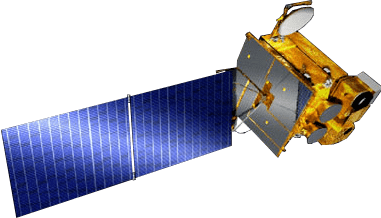Operator KARI SATCAT no. 36744 Manufacturer EADS Astrium Inclination 0.03° Period 24 hours | COSPAR ID 2010-032A Mission duration 7 years Launch date 26 June 2010 Inclination 0.03° Rocket Ariane 5 | |
 | ||
Mission type CommunicationOceanographyWeather Similar Arirang‑2, Kitsat‑1, STSAT‑2A, KSLV‑2, STSAT‑2C | ||
Chollian, (Korean, lit. Thousand Li View) also known as Communication, Ocean and Meteorological Satellite 1 (COMS-1), is a South Korean satellite which was launched in June, 2010. It will be operated by the Korea Aerospace Research Institute, who will use it for communication, oceanography, and meteorological observation.
COMS-1 was constructed by EADS Astrium, and is based on the Eurostar-3000S satellite bus. It has a mass of 2,460 kilograms (5,420 lb), and carries transponders broadcasting in the D/E and K bands of the NATO-defined spectrum, or the L/S and Ka bands of the IEEE-defined spectrum respectively. Its single solar array is expected to generate a minimum of 2.5 kilowatts of power.
COMS-1 was launched by Arianespace using an Ariane 5ECA carrier rocket lifting off from ELA-3 at the Guiana Space Centre in Kourou, French Guiana. The first attempt to launch it occurred on 23 June 2010, however the launch was scrubbed due to a problem with one of the rocket's subsystems. A subsequent attempt on 24 June was also scrubbed, due to a problem with the pressurisation of the rocket's fuel tanks. The launch occurred at 21:41 UTC on 26 June 2010. The Saudi Arabian Arabsat-5A satellite was launched by the same rocket, with a SYLDA adaptor being used to separate the spacecraft. Arabsat-5A was mounted atop the SYLDA, with COMS-1 underneath it.
Following launch, COMS-1 separated into a geosynchronous transfer orbit. It will use an apogee motor to raise itself into geosynchronous orbit. Once it reaches this orbit, it will undergo testing before beginning operations at a longitude of 128.2 degrees East. Its mission is scheduled to last seven years, however the satellite has a design life of ten years.
